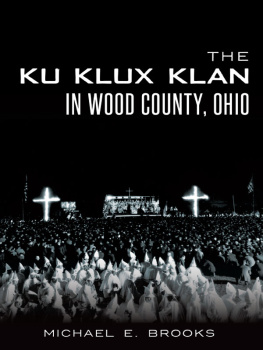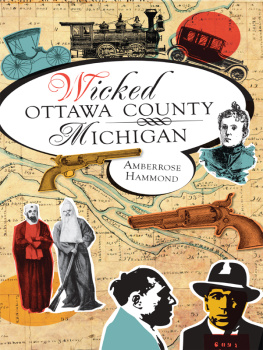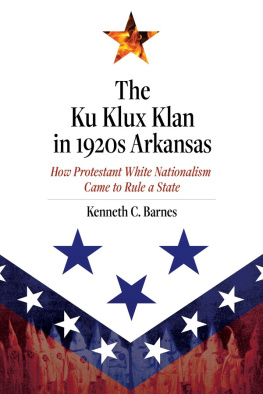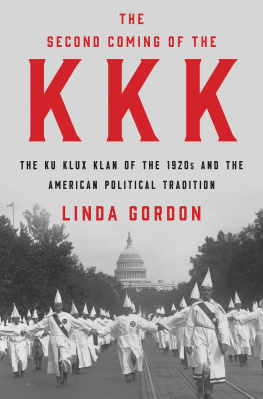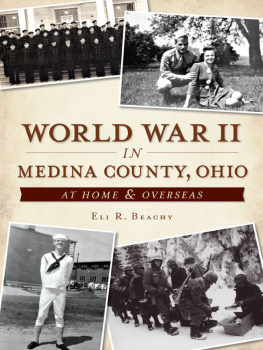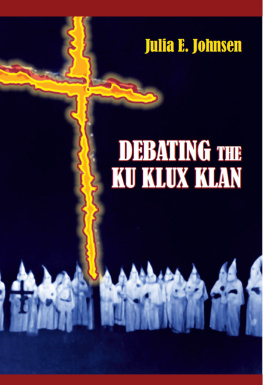
Published by The History Press
Charleston, SC 29403
www.historypress.net
Copyright 2014 by Michael E. Brooks
All rights reserved
First published 2014
e-book edition 2014
ISBN 978.1.62584.827.7
Library of Congress Cataloging-in-Publication Data
Brooks, Michael E.
The Ku Klux Klan in Wood County, Ohio / Michael E. Brooks.
pages cm
print edition ISBN 978-1-62619-334-5 (paperback)
1. Ku Klux Klan (1915- )--Ohio--Wood County--History. 2. Racism--Ohio--Wood County--History. 3. Hate groups--Ohio--Wood County--History. 4. Wood County (Ohio)--Race relations--History. 5. Wood County (Ohio)--Social conditions. I. Title.
HS2330.K63B76 2014
322.42097711609042--dc23
2014014397
Notice: The information in this book is true and complete to the best of our knowledge. It is offered without guarantee on the part of the author or The History Press. The author and The History Press disclaim all liability in connection with the use of this book.
All rights reserved. No part of this book may be reproduced or transmitted in any form whatsoever without prior written permission from the publisher except in the case of brief quotations embodied in critical articles and reviews.

CONTENTS
PREFACE
As any author will attest, writing a book is an arduous process that requires the assistance of many people to make the work successful. Among the people playing important roles in this book was my research assistant, Chloe Koscheva-Scissons. Chloe spent many hours poring through hundreds of copies of archived newspapers and other documents in her efforts to help me examine the rise and fall of the Ku Klux Klan in Wood County. Without Chloes tireless efforts and useful suggestions, this book would not have been possible.
Thanks also to the editors at The History Press for accepting the book proposal and seeing it through the production and marketing stages. This is a talented group of publishing professionals who provided me with a great deal of knowledge of the industry.
The folks at the Center for Archival Collections at Bowling Green State University were extremely helpful during the time I spent in the archives. Thanks to Steve Charter, Marilyn Levinson, Samantha Ashby, Libby Hertenstein and everyone else at the CAC who ran back and forth to locate materials I needed. Thanks also to the staff at the Wood County Historical Society, especially Dana Nemeth, Holly Hartlerode Uppal and Mike McMaster.
Many thanks to the following colleagues who provided insightful comments on drafts of this book: Michael Carver, Amlcar Chall, Rex Childers, Douglas Forsyth, Benjamin Greene, Beth Griech-Polelle, Walter Grunden, Ruth Herndon, Nicole Jackson, Rebecca Mancuso, Scott Martin, Dustin McLoughlin, Ian Mladjov, Apollos Nwauwa and Tina Thomas.
Special thanks goes to Tony DeIuliis, who discovered in the mid-1970s the cache of Wood County Klan documents that was critical to the research for this book. His understanding of the importance of these materials, plus his persistence in getting archivists interested in preserving them, deserves recognition, and I hope that this book lives up to Tonys vision for what might be possible with these KKK documents.
My deepest debt of gratitude goes to my wife, Kimberlyn, who encouraged me to return and restart my academic career after a long hiatus. She patiently provided support throughout my undergraduate and graduate years, helped me transcribe source material for this book and offered a number of thoughtful suggestions on the manuscript that seemed to be the exact advice I needed at the moment.
Finally, the general topic of white supremacy can be something of a minefield for researchers as for many people, wounds from the civil rights struggles of the second half of the twentieth century are still fresh. In my research and writing, I have uncovered a great deal of archival information that by twenty-first-century standards would be considered strongly offensive. For the purposes of historical accuracy, I have elected not to censor any of the historical sources to spare sensitive readers. Keep in mind that in a contextual sense, the racist language used in the primary sources referenced in this book was considered normal for the time period.
In addition, the emergence of the Internet has provided white supremacists, neo-Nazis and white nationalists a particularly powerful recruiting and broadcasting tool since the mid-1990s, and there has been a growth of activity by such groups. In some ways, racial tensions have increased in the past decade due to the unlimited exposure that hate groups can generate via electronic media and the resultant backlash by concerned citizens. Thus, my apologies to those who might be offended by the words and deeds of historical actors, but often history is not pretty. Sometimes it can be downright ugly.
INTRODUCTION
The choir and congregation had just finished singing a hymn entitled The Path of the Just during an evening service when a group of nine men wearing Ku Klux Klan robes marched into the church. One of the Klan members carried the American flag, while another Kluxer held high a copy of the Bible as the anonymous men entered the house of worship.
The hooded visitors, parading in formation, continued up the aisle to the altar, where they presented the minister with an introductory letter and a financial contribution to the church.
The Klan group then turned and faced the audience, at which point one of the Klansmen opened the Bible and began reading from the twelfth chapter of the New Testament book of Romans:
Therefore, I urge you, brothers and sisters, in view of Gods mercy, to offer your bodies as a living sacrifice, holy and pleasing to Godthis is your true and proper worship. Do not conform to the pattern of this world, but be transformed by the renewing of your mind. Then you will be able to test and approve what Gods will ishis good, pleasing and perfect will.
The Klan members then directed the congregation to kneel in prayer, at which point, one of the Kluxers led the assembled church members in the Lords Prayer. After this impromptu KKK ceremony, the hooded members of the Klan silently marched out of the church and into the chilly February evening air.
This scene likely seems surreal enough to a twenty-first-century reader who is decades removed from the point in time when the Ku Klux Klan was a powerful organization with millions of members. Even stranger, however, is the fact that the above Klan activity took place on February 11, 1923, in the city of Bowling Green, Ohio, at the local United Brethren Church. This event took place not in the Deep South of the Jim Crow era or the height of the civil rights movement in the 1960s, but in a rather sleepy midwestern college town.
The Klan visit to the United Brethren Church was hardly the surprise described by the newspaper reporter for the Wood County Republican in its coverage of the event. Word had leaked out prior to the Ku Klux Klan event, as the main auditorium filled and adjacent classrooms had to be opened to accommodate the hundreds of additional visitors that the Klan event attracted.
Most importantly, the Reverend Rush A. Powell, minister of the United Brethren Church, was himself a charter member of the Wood County Chapter of the Knights of the Ku Klux Klan.
Reverend Powell welcomed the Klan to Trinity United Brethren Church with open arms, telling the congregation that he stood for the same principles as those held by his hooded guests. After the Klan Bible reading and prayer, Reverend Powell spoke of the perils the United States faced with criminal activity, undesirable immigrants and a general decline in morality. While not publicly declaring himself a Klan member, Reverend Powell assured his audience that the Klan was formed to address those threats to America.
Next page
